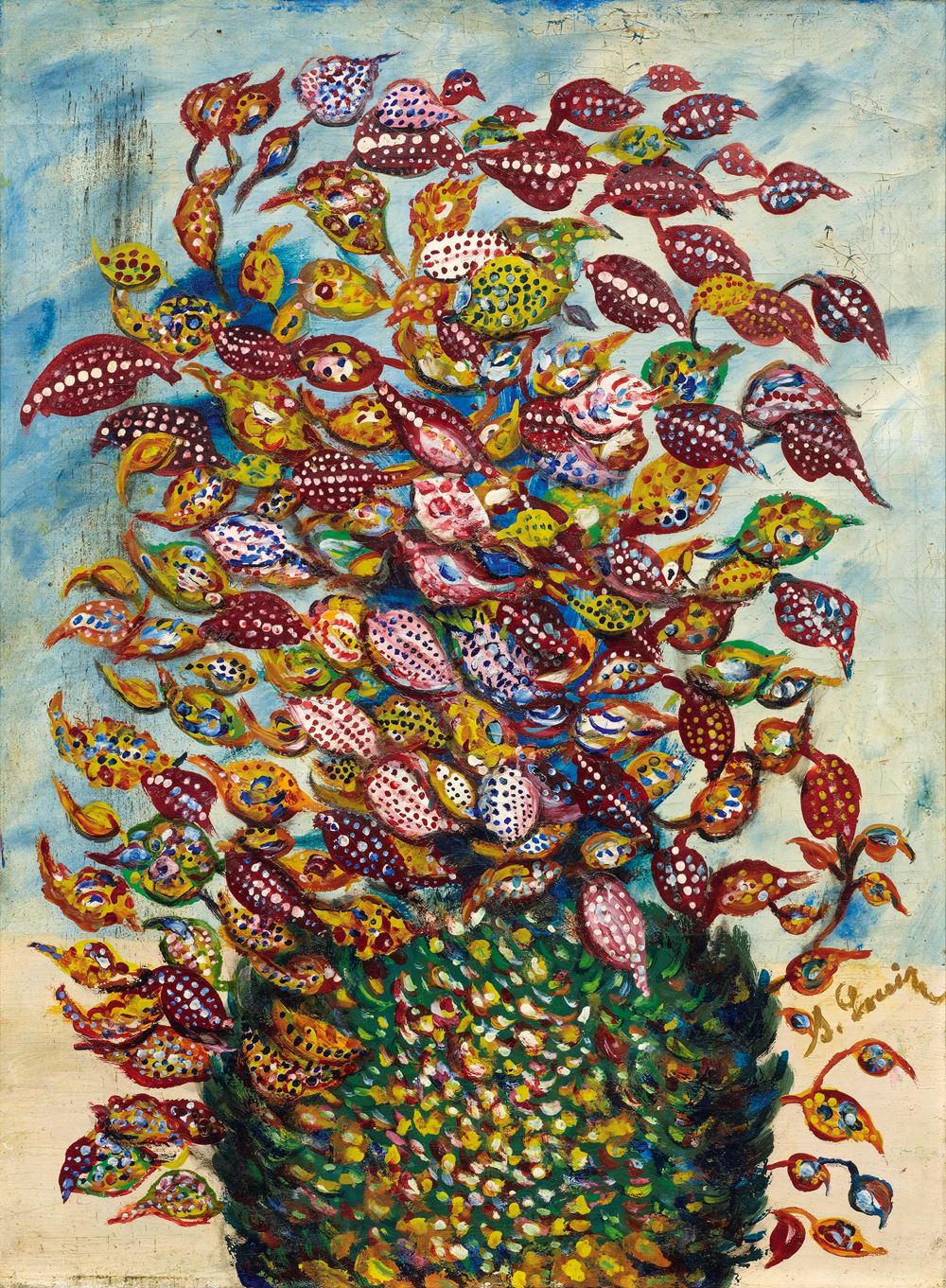
Lotto 3234 - A189 Impressionismo e arte moderna - venerdì, 28. giugno 2019, 17h00
SÉRAPHINE LOUIS
Provenance:
- Familiy Uhde, Paris.
- Mme. Selz, Neuilly.
- Galerie Pro Arte Kasper, Morges.
- Private collection, Switzerland, bought 1988 at the above gallery.
Exhibitions:
- Paris 1968, Galerie Séraphine, Galerie d'art de la tradition populaire, p. 60, np. 36 (with ill.).
- Milan 1974, La grande domenica, Roronda di via Besano, 1 May - 19 May 1974, p. 81 (with ill.; dated circa 1912).
- Geneva 1983, l'univers des naïfs, Musée de l'Athénée, 8 July - 17 September 1983, p. 16, no. 83 (with ill.; dated 1920-25).
Literature:
- Foucher, Jean-Pierre: Séraphine de Senlis, Paris 1968, p. 96 (with ill.; dated 1927/28).
- Körner, Hans/Wilkens, Manja: Séraphine Louis 1864-1942. Biographie/Werkverzeichnis, Berlin 2015, p. 245, no. 79 (with ill.).
In addition to “customs man” Henri Rousseau, Séraphine Louis is one of the most important painters of French naïve art. Both artists were discovered by Wilhelm Uhde, the most important patron of this artistic style.
Only since 2009, when director Martin Provost dedicated a successful and award-winning film to the artist, simply titled "Séraphine", has she become recognised again by a wider public. Her biography reads like the perfect film script. A cleaning lady living in very poor conditions in Senlis, France, enjoys painting and is serendipitously discovered by the famous art dealer Uhde. He is deeply moved by her works and thenceforth promotes her by providing her with materials for her painting.
She was always considered eccentric in her village. She heard voices, felt called to paint in the name of the Mother of God, and prophesied of the coming Apocalypse. The important exhibition of five naïve painters, organised by Wilhelm Uhde in 1928 in the Galerie des Quatres Chemins, likely bore the name "Les peintres du Sacre Coeur” (The Sacred Heart Painters) due to her influence.
Floral still lifes represent the artist’s most important motif. The depicted flowers are actually fantasised to represent as much vitality as possible. The present work serves as an outstanding example of Séraphine Louis’ artistic vocabulary, the entire composition vibrating with life.
In the artist’s monograph, Hans Körner and Manja Wilkens describe the uniqueness of Séraphine Louis' still lifes in reference to the present work: “that the impression of a vegetabilisation of the vessel [. . .] is not an arbitrary association, is confirmed by a large bouquet of flowers formerly in a collection in Neuilly [the work offered here]. The loosely set leaves of the bouquet can hardly compete with the dominant vase. The vase itself is dotted with small splashes of colour, which may assume the form of small colourful leaves. The contour of the vase is agitated; silhouettes of leaves become apparent rather than the vase wall. Somewhere between the vessel and the tuberous thickened stem, this structure has its place" (Op. cit. p. 105).
CHF 20 000 / 30 000 | (€ 20 620 / 30 930)
Venduto per CHF 100 340 (incl. premio dell'acquirente)
Non si assume alcuna responsabilità per la correttezza di queste informazioni.

